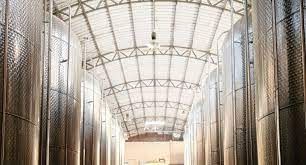
Vivace!
Piemonte

About the Winery
Vivace! is a new brand of Italian wines that celebrate the passion and vibrancy of Northern Italy. The wines are light and refreshing, with a hint of bubbles that add a little sparkle to each glass. Vivace! wines are perfect for when you’re enjoying some downtime alone or hanging out with friends, either way, treat yourself at the end of the day with a glass of happy!
Piemonte
Piedmont, Italian Piemonte, regione (region), northwestern Italy, comprising the province (provinces) of Alessandria, Asti, Biella, Cuneo, Novara, Torino, Verbano-Cusio-Ossola, and Vercelli.
Piedmont has fostered a serious winemaking tradition since the Middle Ages. Early references to Nebbiolo wine were documented in the castle of Rivoli in 1266 and in the village of Canale in the Roero in 1303. The region’s most prized grape was also highlighted in a book of statutes in the village of La Morra in 1431, wherein a five-lire fine was imposed on anyone who cut Nebbiolo vines.
Piedmont is Italy’s second largest geographical region and the country’s seventh largest wine-producing region. Approximately 45,000 hectares of Piedmont’s 25,399 square kilometers are under vine. Piemontese wine makes up 5 percent of Italy’s national production and almost 18 percent of the country’s total exports. Most of the region’s wine comes from small vineyards in which the growers also make the wine. In Barolo and Barbaresco, the region’s most revered winemaking areas, the average vineyard is only about five acres with an output of approximately 10,000 bottles a year.
Situated in the northwest, Piedmont shares borders with France and Switzerland. The region’s Italian name, Piemonte, translates to foot of the mountains, which is a fitting descriptor for its subalpine location and the fact that it’s surrounded by mountains on three sides—the Alps in the north and west and the Apennines in the south. The mountains create a protective barrier around Piedmont and the sub-alpine foothills offer many sunny slopes for planting the region’s most-prized grape. While the sunniest aspects tend to be reserved for Nebbiolo, nearly all of the vineyards in Piedmont are planted on hills ranging in elevation from 150 to 450 meters above sea level. Very few (less than 5 percent) are officially classified as flat. The coolest sites are usually planted with Dolcetto, except in the hills southeast of Asti, where cooler vineyards are reserved for Moscato. Variations in soil composition, altitude, and aspect combined with the sub-mountainous landscape contribute to a range of mesoclimates throughout the region. source: SevenFiftyDaily

Vineyard(s)
Ratings & Reviews
Title | Item | Vintage | Publication | Score | Review |
|---|---|---|---|---|---|
Vivace! | Sweet Red NV | NV | 90 | Silky and lightly sweet with notes of cherry, boysenberry, mint and milk chocolate. | |
Vivace! | Sweet Red NV | NV | 84 | This semisweet wine pops on the palate with candied mixed red berries and a subtle floral note. Defined by its easy nature and fruitiness, the palate is juicy and loaded with Luxardo cherry and sweet spice flavors. I highly recommend a chill to this wine. | |
Vivace! | Sweet White NV | NV | 85 | This semi-sweet sparkling wine delights with aromas of peach and fresh floral aromas. It has a vibrant and fresh structure reminiscent of freshly chopped apples with a squeeze of lemon. |














